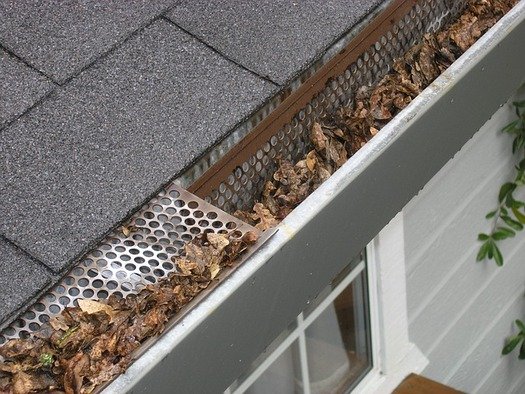Cleaning is a universal activity, ingrained in our daily routines, but have you ever wondered about the science behind it? The cleaning products we use aren’t just magical elixirs; they harness the power of chemistry to break down dirt and grime. In this comprehensive exploration, we’ll delve into the science behind cleaning, unraveling the mysteries of various cleaning products and understanding how they work to keep our spaces spotless.
1. Soap and Detergents
The Basics of Soap
Soap is a cleaning superhero that has been around for centuries. At its core, soap is a surfactant, a substance that reduces the surface tension of water. This allows water to spread and wet surfaces more effectively, breaking down and carrying away dirt and grease.
The Action of Detergents
Detergents, close cousins of soap, work similarly but with some enhancements. They are synthetic compounds designed to be effective in hard water and have improved cleaning abilities. Detergents break down oils and fats into smaller particles, making them easier to wash away.
2. The Power of Acids
Cutting Through Mineral Deposits with Vinegar
Acids, like vinegar, are powerful against mineral deposits. When limescale or soap scum accumulates, acids break the bonds between these deposits and surfaces, making them easy to wipe away. Vinegar, a mild acid, is a versatile cleaner for surfaces like glass and tiles.
Citrus Magic: The Acidic Power of Lemons
Lemons, with their natural acidity, act as excellent cleaners. The citric acid in lemons dissolves hard water stains and cuts through grease. The fresh scent is an added bonus, making lemons a natural and fragrant cleaning solution.
3. Alkaline Solutions and their Cleaning Prowess
Baking Soda: The Unsung Hero
Baking soda, or sodium bicarbonate, is a powerhouse in cleaning. It’s mildly alkaline and, when mixed with water, forms a solution that can dissolve dirt and grease. Its gentle abrasive nature also makes it effective for scrubbing surfaces without causing damage.
Ammonia’s Cleaning Chemistry
Ammonia is another alkaline substance commonly found in cleaning products. It’s excellent for cutting through grease and can be particularly useful for cleaning glass surfaces. However, it should be used with caution due to its strong fumes and potential skin irritation.
4. The Science of Disinfectants
The Role of Disinfectants in Cleaning
Disinfectants are crucial in maintaining a hygienic environment. They work by destroying or inactivating bacteria and viruses on surfaces, preventing the spread of illnesses. Common disinfectants include bleach, hydrogen peroxide, and alcohol-based solutions.
Bleach: The Germ Fighter
Bleach, or sodium hypochlorite, is a potent disinfectant. It works by releasing chlorine, which attacks and breaks down the cell structure of microorganisms. While highly effective, it should be used cautiously and in well-ventilated areas.
5. The Marvel of Microfiber
Microfiber’s Cleaning Mechanism
Microfiber cloths might seem like simple tools, but their structure makes them highly effective. The fibers are incredibly fine, allowing them to reach into microscopic crevices and lift dirt and bacteria from surfaces. They also excel at absorbing liquids, making them versatile for various cleaning tasks.
The Importance of Enzymatic Cleaners
How Enzymatic Cleaners Break Down Stains
Enzymatic cleaners use biological molecules, enzymes, to break down and digest stains. These cleaners are particularly effective against organic matter, such as pet stains or food spills. Enzymes work by speeding up chemical reactions, breaking down complex molecules into simpler ones that are easier to clean.
Pet-Friendly Cleaning with Enzymatic Cleaners
Enzymatic cleaners are often the go-to choice for pet owners. They not only eliminate odors but also break down the compounds in pet stains, removing both the visible stain and the scent that might attract pets back to the same spot.
6. Green Cleaning and Eco-Friendly Options
The Rise of Eco-Friendly Cleaning
In recent years, there has been a surge in eco-friendly cleaning products. These products prioritize sustainability, using biodegradable ingredients that minimize environmental impact. Look for labels like “Green Seal” or “EcoLogo” for products that meet stringent environmental standards.
DIY Green Cleaners: Harnessing the Power of Nature
Many eco-conscious individuals opt for DIY green cleaning solutions. Ingredients like vinegar, baking soda, and lemon can be combined to create effective and environmentally friendly cleaning concoctions. The science behind these DIY solutions lies in the natural properties of the ingredients.
7. Safety First – Understanding Cleaning Product Labels
Decoding Cleaning Product Labels
Understanding cleaning product labels is crucial for safe and effective use. Labels often include information on the product’s purpose, active ingredients, and safety precautions. Familiarizing yourself with these labels ensures that you use the right product for the right job while minimizing risks.
Mixing Cleaning Products: A Cautionary Tale
Certain cleaning products should never be mixed, as the combination can produce harmful fumes or reactions. For example, mixing bleach with ammonia creates toxic chloramine gas. Always read labels and follow instructions to ensure a safe cleaning experience.
Conclusion
Cleaning, once a chore relegated to the mundane, becomes a fascinating journey when we uncover the science behind it. From the surfactant magic of soap to the enzymatic marvels breaking down stains, each cleaning product has a unique role grounded in scientific principles. Armed with this knowledge, we can approach cleaning not just as a task but as a dance with the elements, a choreography of molecules working together to create a clean and healthy living environment. So, as you embark on your next cleaning adventure, remember: science is your ally in the quest for a sparkling, spotless home.














